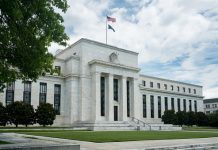Key insights from the week that was.
Critical data for Australia’s economy was received this week; elsewhere though, it was the mindset and actions of policy makers that filled the headlines.
Of the data received this week, Australia’s October labour force survey was most significant. Against the market’s expectation for a 15k increase in employment, 32k jobs were instead created in the month. This was despite activity being restricted by holidays and sick leave as well as the floods, with participation edging down 0.02ppts from 65.55% to 65.53%. As a result of these two outcomes, the unemployment rate declined to 3.4% in October, its lowest level since November 1974. Westpac expects a further marginal decline in the unemployment rate to 3.3% in coming months before employment growth slows below population growth and the unemployment rate begins to trend higher. Note, immigration’s revival has already been seen, growth in the working age population lifting from 0.6%yr last December to 1.2%yr in October. Highlighting the continued need for further labour force gains though, growth in hours worked remains ahead of population growth, and underemployment is also near record lows.
It is not surprising then that wage growth in the private sector showed strength in Q3 2022. Underlying the 1.0% gain in the headline Wage Price Index was not only the largest minimum wage/award increase in more than a decade, but also a notable lift in individual bargaining agreements. Hence, private sector wages posted its largest quarterly gain since September 2010, up 1.2% in Q3 to be 3.4% higher than a year ago. Additionally, nearly half of the jobs in the private sector reported an increase in compensation; and of those that did, the average increase was a stellar 4.3% in the quarter. We expect the tightness in the labour market to continue flowing through to strong wage increase over next year, with the headline measure to rise from 3.6%yr in 2022 to 4.5%yr in 2023.
Meanwhile, steady progress in the recovery of overseas travel was evident in the October overseas arrivals and departures release, but it is clear that the pace is slowing. Since the June/July holidays, the seasonally adjusted three-month average growth rate for arrivals has declined from 18.8% in August to 6.2% in October; and for departures, it has fallen from 12.6% to 2.9%. The December/January period will see a strong boost to travel, but the recent easing in travel flows raises questions around the extent to which momentum can be sustained in 2023. The visa detail however remains constructive, with net arrivals of students and temporary workers tracking average monthly gains well above pre-pandemic levels – at around 20k/month and 10k/month respectively. This should, in time, go some way towards alleviating the critical labour undersupply problems Australia currently faces.
The November meeting minutes of the RBA were also received this week. While still highlighting the inflation challenge before Australia, the tone of these minutes was more dovish at the margin, their view on the interest rate outlook moderated to the Board “expects to increase interest rates further over the period ahead” in November from “likely to require further increases in interest rates over the period ahead” in October. Clearly, having raised interest rates aggressively through 2022 and with uncertain lags between policy announcement and effect, the RBA Board seem to increasingly be of the view that the risks to activity as well as inflation need to be monitored, and also believe that “acting consistently” will “support confidence in the monetary policy framework among financial market participants and the community more broadly”. While Westpac continues to believe the RBA will need to raise the cash rate to a peak of 3.85%, this is likely to only occur in 25bp increments, with 3.85% reached in May 2023.
Jumping to the US. This week’s data was decidedly mixed, with October retail sales ahead of expectations (1.3% for headline and 0.7% for the control group, albeit with part of the strength due to price movements) but the PPI, industrial production and housing data weaker. The focus of market participants was instead the run of Fedspeak delivered through the week. While there was some variation across speakers, the take home point from their messaging was that policy needs to remain restrictive for some time and that we have not yet seen this cycle’s peak for the fed funds rate. Arguably this cautious attitude towards the outlook is being evinced because we are yet to see a succession of weaker CPI prints and as the labour market is still historically tight. Until slack increases, the FOMC want to keep financial conditions tight; that requires the market to remain focused on upside risks for inflation and policy. It is unlikely to be a coincidence that this tone was struck just after the US 10 year yield breached the 4.0% level to the downside.
Over in the UK, overnight the Sunak Government delivered a Fiscal Update that stood in stark contrast to its predecessor. The Government’s fiscal package involves £55bn of fiscal tightening over the next five years, comprised of £30bn in spending cuts and £25bn of tax hikes, the latter the largest tax increase in three decades. The budget’s major profiles were of little surprise to markets though given a broad outline had already been circulating in the media over recent weeks. The OBR’s assessment does however emphasise the stark fiscal outlook, with the tax burden set to reach 37.1% of GDP (a post-war record) and net debt to peak at 97.6% of GDP in 2025/26 before easing modestly upon the improvement of economic conditions. Indeed, the economy is expected to remain in recession through to 2024 as historic inflation pressures see UK households face the largest fall in real wages in six decades, declining 7% into 2023/24. Overall, the budget was welcomed as a more appropriate fiscal stance given the high-inflation environment, but risks to the activity outlook are firmly to the downside, raising the possibility of a deeper and more sustained period of negative and/or below-trend growth should inflation pressures persist longer than expected.
Whereas the US and UK’s growth prospects into 2023 are weak to very weak, China’s momentum looks to be strengthening. In our view, the market was right to discount the weaker-than-expected October activity data – with retail sales hit by lockdown uncertainty in the month and total fixed asset investment resilient despite even weaker conditions for housing – given the significant increase in support for the economy announced at the weekend.
As we highlighted this week, these changes make clear that authorities are now seeking a return to growth for the housing sector and, more importantly, that China is embarking on a progressive domestic re-opening of their economy, with large-scale lockdowns to be avoided from now on. That guidance on the latter comes as case loads reach new highs in many regions signals authorities’ intent to seek to live with the virus. It is critical however that these measures restore confidence across the economy. Without that, the robust growth we are forecasting cannot eventuate (3.5% for 2022 and 6.0% in 2023; year-average). While secondary to a domestic re-opening, the market will also continue to assess geopolitical uncertainties and their impact on trade. Meetings held at this week’s G20 were constructive, but there needs to be follow through if trade relations with the West are to improve. In the meantime, China is likely to continue investing into expanding their Asian markets which have shown considerable promise of late.












